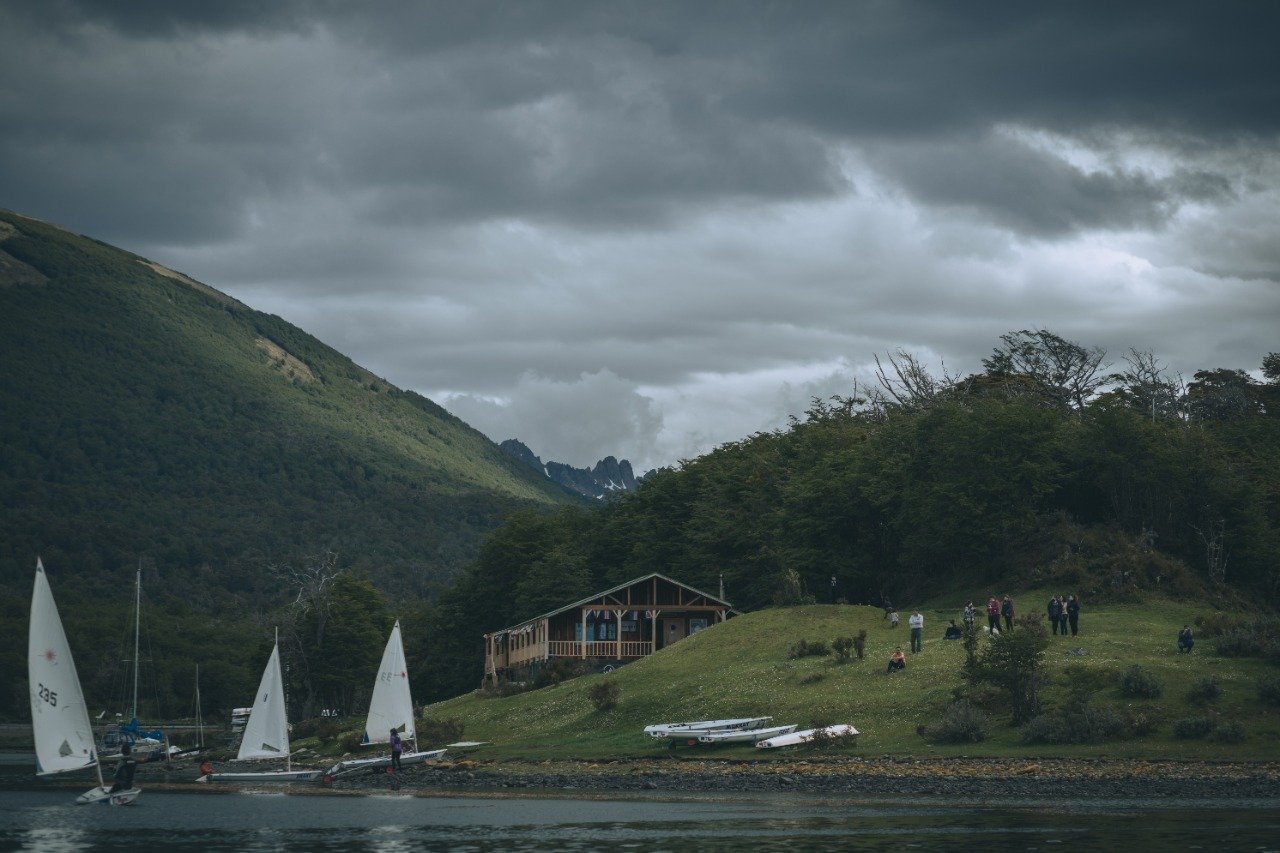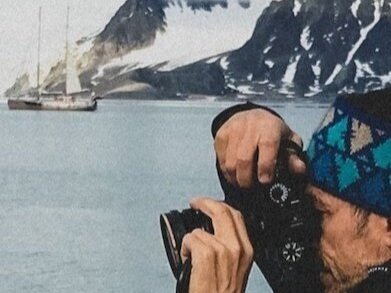Bienvenidos! Arturo y Tito
These photos are of what is already a significant moment in the history of the boat. It occurred a couple of weeks ago. After fifty days of our departure from KM Yachtbuilders in the Netherlands, we arrived in the southernmost village of the planet, Puerto Williams.
From one side, it was the welcome celebration for Tito and Arturo. In the core of this project there is a tight collaboration with Cedena PW (Club de Deportes Náuticos de Puerto Williams). This non-profit organization, developed by the Chilean Nicolás Ibáñez Scott, aims to complement children’s and young people’s education through the values of sailing. Since “Vinson of Antarctica” was born, it was arranged that the vessel would train some of their young sailors in the profession of seamen. Arturo and Tito have been the first ones. This is how the two young sailors from the Región Magallánica y Antárctica Chilena joined VoA’s crew in what has probably been the boat’s most extended trip ever. On that special day, the village, the navy, the sailing community, and their sailing schoolmates wanted to escort them along their last miles before reaching home. It was beautiful, extraordinary.
On another side, Puerto Williams is also where Nicolás and Skip Novak met. As the result of that connection, the idea of relating both exploration and education through a training boat. This was some time ago, and during these years, a large team of professionals has been working together to make it a reality. Most of the project has happened in the Northern Hemisphere, but everyone knew they were working in a boat that one day would be home-based in the very southern latitudes of the planet. After the boat conception, construction, and her first scientific expedition in the Arctic only four months ago, arriving at this very symbolic point was also something remarkable and to celebrate. The boat came to the Cape Horn region; the project had wholly started.
Our last port of call was Punta del Este, Uruguay, about nine days ago, and since a couple of days before reaching the area, we started talking to coordinate the ship’s entrance hour to sail the last mile together with the sailing school kids. As we had to slow down the boat to time our pass through the Le Maire Straits with the right wind and tide, we knew our estimated arrival time to the area. The Beagle Channel welcomed us with good honors (thirty to forty knots on the nose and current against us), but even with the elements slowing us down, we were arriving with plenty of time in hand. We had to wait; we could stop somewhere. Finally, after passing very near Islote Snipe at sunset, we reached Isla Navarino. Tito steered the boat into Caleta Margarita’s, and we dropped the anchor there. After seven weeks at sea, we were surrounded by the stillness, the peace, and the silence of a natural shelter.
After two months, these were our last hours together. Marta and the rest of the team organized a farewell brunch in honor of the two sailing trainees. We thought we preferred to give our goodbyes in this privileged scenery than in the busy situation of a boat that had just reached port. So, after the farewell brunch and some words from everyone on board, we started preparing the ship for arrival.
It is not every day that you can dress a boat with etiquette. I remember the crew buying four complete International flag codes in the Netherlands to dress her for a special event. We felt we would need it one day, and it was fascinating to realize that the time had arrived. A dress as a tribute to the region, the boat owner, our managers, the designers, the boat builders, the sailing school and the sailing community, the other company boats and their crews, and the Base Barcelona team.
We headed into the Paso Mackinley in a lovely, sunny, and extraordinarily calm afternoon. Chilean Navy ships passing by talking to us on the radio to congratulate the trainees for their trip. As soon as we could see the village through the binoculars, we spotted the optimists and the other boats sailing towards us. The rest is history, many emotions, and ship horns blowing long and strong.
Pictures from Gabriel Leiva
kenneth Perdigón
Captain













